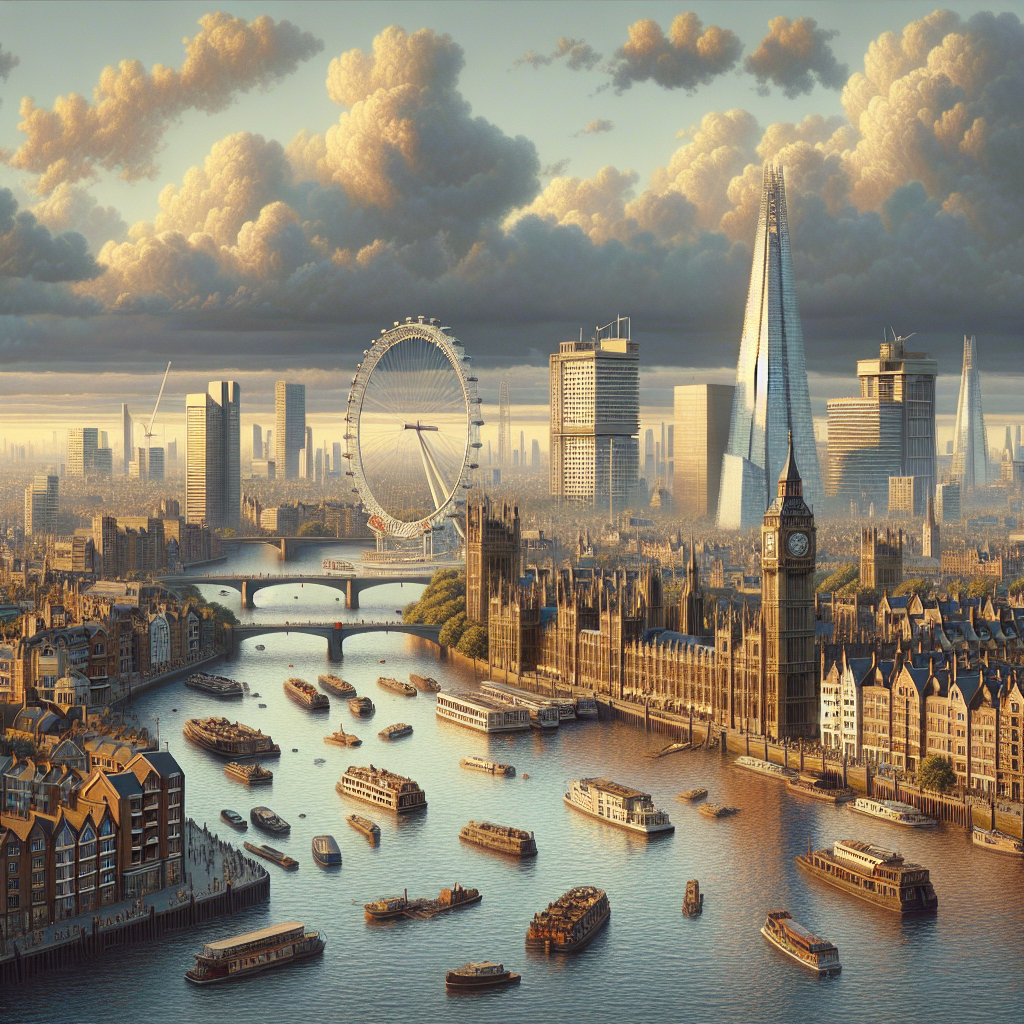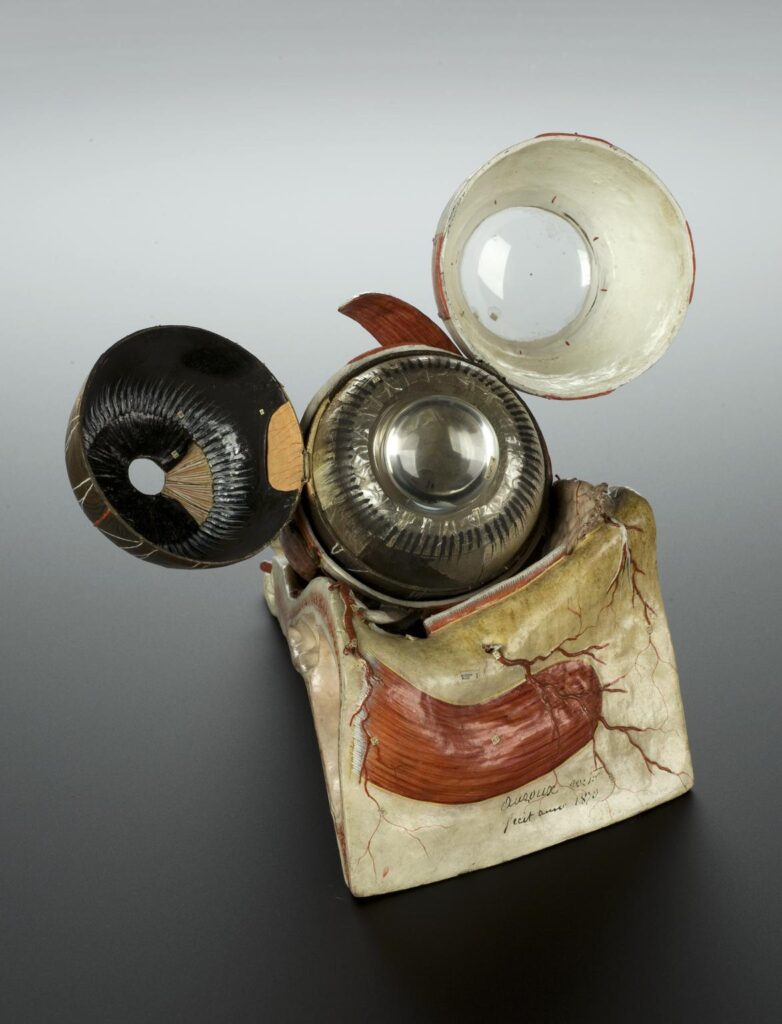
by jsendak | Nov 29, 2024 | Art

London is the capital city of England and the United Kingdom, located in the southeastern part of the country. With a population of over 8 million people, it is one of the most populous cities in Europe. London is known for its rich history, iconic landmarks such as the Tower of London, Buckingham Palace, and the London Eye, as well as its diverse culture and vibrant arts scene. The city is a major financial hub, home to numerous international businesses and headquarters of many multinational corporations. London is also famous for its world-class museums, theaters, and restaurants, making it a popular destination for tourists from around the globe.
The History of London
London, the bustling metropolis that stands proudly on the banks of the River Thames, has a rich and captivating history that spans over two millennia. From its humble beginnings as a Roman settlement to its status as a global financial hub, London has witnessed countless events that have shaped its identity and made it the vibrant city it is today.
In AD 43, the Romans established a settlement called Londinium on the site where modern-day London now stands. This strategic location provided access to the river and allowed the Romans to control trade and transport throughout the region. As Londinium grew, it became an important center for commerce and administration in Roman Britain. The Romans built a bridge over the Thames, known as London Bridge, which would become an iconic symbol of the city for centuries to come.
However, London’s early prosperity was not without its challenges. In 60 AD, the Iceni tribe, led by the legendary Queen Boudica, launched a revolt against Roman rule. The uprising resulted in the destruction of much of Roman London, but the city quickly recovered and continued to flourish.
Over the centuries, London evolved and expanded, with kings and queens leaving their mark on the city. In the 11th century, William the Conqueror ordered the construction of the Tower of London, a formidable fortress that would serve as a royal palace, a prison, and a treasury. The Tower of London still stands today as a reminder of the city’s medieval past.
During the Middle Ages, London became a bustling hub of trade and commerce. The city’s merchants formed powerful guilds, such as the Worshipful Company of Mercers and the Worshipful Company of Grocers, which played a vital role in London’s economic growth. The iconic medieval street, Cheapside, was known for its bustling markets and grand processions.
London’s importance continued to grow during the Tudor era. Queen Elizabeth I made the city her capital, and it became a center of culture and intellectual thought. Playwrights like William Shakespeare and Christopher Marlowe entertained audiences in the city’s theaters, while explorers like Sir Francis Drake set sail from London to explore the New World.
The Great Fire of London in 1666 was a devastating event that destroyed much of the city. However, it also presented an opportunity for London to be reborn from the ashes. The city was rebuilt under the direction of Sir Christopher Wren, who designed and oversaw the construction of iconic landmarks such as St. Paul’s Cathedral.
London’s influence continued to grow during the British Empire. The city became the heart of a vast trading network that spanned the globe. Goods from all corners of the empire flowed into London, making it one of the wealthiest cities in the world. The British Museum, founded in 1753, became a repository for treasures acquired from around the world.
As the Industrial Revolution swept through Britain, London became a hub of innovation and progress. The city’s population exploded, and new neighborhoods and suburbs sprang up to accommodate the influx of people. The iconic Tower Bridge, completed in 1894, symbolized London’s modernity and engineering prowess.
London faced many challenges throughout its history, including the devastating bombings of World War II. However, the city’s resilience and determination allowed it to rebuild and thrive once again. Today, London stands as a global city, known for its diverse culture, thriving financial sector, and iconic landmarks such as Buckingham Palace, the Houses of Parliament, and the London Eye.
London’s history is a testament to the indomitable spirit of its people and the ability of a city to reinvent itself time and time again. As you walk through its streets, you can’t help but feel the weight of centuries of history and the vibrant energy of a city that has stood the test of time.
Interesting Fact: Did you know that London’s iconic clock tower, commonly known as Big Ben, is actually the nickname for the Great Bell of the clock? The tower itself is called the Elizabeth Tower, named after Queen Elizabeth II.
So next time you find yourself in London, take a moment to absorb the rich history that surrounds you and appreciate the incredible journey this city has taken to become the extraordinary place it is today.
The Political System in London
London, the vibrant and bustling capital of the United Kingdom, is not only known for its iconic landmarks, rich history, and diverse culture but also for its unique political system. As a global city with a population of over 8 million people, London operates under a distinct political structure that sets it apart from other cities in the UK.
In London, the political system revolves around the Greater London Authority (GLA), which is responsible for governing the city and ensuring the well-being of its residents. The GLA consists of two main components: the Mayor of London and the London Assembly.
The Mayor of London, often referred to as the “Mayor,” is the head of the GLA and plays a crucial role in shaping the city’s policies and initiatives. The Mayor is elected by Londoners through a popular vote and serves a term of four years. This position holds significant power, as the Mayor has authority over various aspects of city governance, including transport, planning, policing, and economic development.
One interesting fact about the Mayor of London is that they have the power to set the London budget, which amounts to billions of pounds each year. This responsibility allows the Mayor to allocate funds to different sectors, ensuring that the needs and aspirations of Londoners are met.
The London Assembly, on the other hand, acts as a watchdog and scrutinizes the Mayor’s decisions. Comprising 25 members, the Assembly represents different constituencies and political parties. Their primary role is to hold the Mayor accountable and challenge their policies when necessary. The Assembly also conducts investigations into matters of public interest, ensuring transparency and good governance.
London’s political system also extends to local government, with borough councils playing a vital role in the city’s administration. There are 32 boroughs in London, each with its own council responsible for local services such as housing, education, and waste management. These councils are elected by local residents and work in conjunction with the GLA to address the specific needs of their communities.
Another interesting fact about London’s political system is that it allows for diverse representation. The city has seen politicians from various backgrounds, ethnicities, and genders holding positions of power. This inclusivity reflects the multicultural nature of London and ensures that different voices are heard in the decision-making process.
London, being a global financial hub, also attracts international attention in terms of politics. The city often hosts major political events, such as international summits and conferences, where world leaders gather to discuss global issues. These events not only put London in the spotlight but also highlight its significance on the global political stage.
In recent years, London has faced numerous challenges, including Brexit and the COVID-19 pandemic. However, the city’s political system has proven resilient, with its leaders working tirelessly to address these issues and safeguard the well-being of Londoners.
As London continues to evolve and grow, its political system will undoubtedly play a crucial role in shaping its future. The Mayor, the London Assembly, and the borough councils work together to ensure that the city remains a thriving and inclusive metropolis, where the voices of its residents are heard and their needs are met.
In conclusion, the political system in London is a complex and dynamic structure that reflects the city’s diverse population and global significance. The Mayor of London, the London Assembly, and the borough councils collectively govern the city, ensuring that it remains a vibrant and prosperous place for its residents. With its unique political setup, London stands as a shining example of effective urban governance.
The Diverse and Vibrant Nature of London
London, the bustling capital of England, is not just renowned for its majestic historical landmarks, vibrant culture, and bustling city life. It is also home to a surprising amount of nature, offering a tranquil haven amidst the urban chaos. From sprawling parks and lush gardens to hidden wildlife sanctuaries, the city boasts a diverse array of flora and fauna that thrive within its borders.
One cannot mention the nature of London without highlighting its magnificent parks. The most famous among them is undoubtedly Hyde Park, a sprawling 350-acre green oasis nestled right in the heart of the city. As you wander through its meandering paths, you are greeted by the serene beauty of its vast open spaces, dotted with ancient trees and vibrant flowerbeds. The park is a haven for wildlife, with numerous species of birds, squirrels, and even the occasional fox calling it home.
Adjacent to Hyde Park lies Kensington Gardens, an enchanting blend of immaculately manicured lawns, ornamental flower beds, and tranquil water bodies. This verdant paradise is home to the iconic Kensington Palace, where one can explore the stunning Sunken Garden—an oasis of vibrant blooms that changes its colors with the seasons. Kensington Gardens also boasts a picturesque boating lake, where visitors can paddle around while enjoying the tranquil surroundings.
Moving eastward, we find ourselves in Richmond Park, a vast expanse of wild beauty covering over 2,500 acres. As one of the largest urban parks in Europe, it is a haven for wildlife and a cherished retreat for nature enthusiasts. Here, the ancient oaks and bracken-covered hills provide a habitat for a variety of wildlife, including herds of majestic red deer. Exploring Richmond Park feels like stepping into a different world, far removed from the city’s hustle and bustle.
London’s nature extends beyond its parks and gardens, with hidden gems scattered throughout the city. One such gem is the Kyoto Garden in Holland Park, a tranquil Japanese-inspired oasis complete with a koi pond, picturesque bridges, and meticulously manicured bonsai trees. The garden offers a serene escape from the city’s frenetic pace, transporting visitors to the serenity of the Far East.
Not far from the city center lies the Wetland Centre in Barnes, a haven for birdwatchers and nature lovers alike. This urban oasis is home to a plethora of bird species, including kingfishers, herons, and even the elusive bittern. Visitors can explore its network of lakes, meadows, and reed beds while immersing themselves in the peaceful sounds of nature.
London’s canals also harbor unexpected pockets of nature. Regent’s Canal, for instance, offers a scenic route through the city, flanked by lush greenery and charming houseboats. Walking along the towpath, you may encounter swans gracefully gliding on the water, ducks nesting along the banks, and even the occasional otter or water vole.
The city’s commitment to conserving its natural heritage is evident in its numerous wildlife reserves. The London Wetland Centre, Walthamstow Wetlands, and Woodberry Wetlands are just a few examples of these protected areas. These reserves provide essential habitats for a wide range of bird species, insects, and small mammals while offering visitors an opportunity to learn about and appreciate the wonders of nature.
In conclusion, London’s nature is a testament to the city’s ability to seamlessly blend urban living with natural beauty. From its expansive parks and gardens to its hidden sanctuaries and wildlife reserves, the capital offers a diverse and vibrant range of natural landscapes. So, whether you are seeking tranquility, a chance to reconnect with nature, or simply a respite from the city’s hustle and bustle, London’s natural wonders are waiting to be explored.
The Cuisine in London
London, the bustling capital city of England, is not only renowned for its historical landmarks and vibrant culture but also for its diverse and delectable cuisine. With a melting pot of cultures and influences from around the world, London offers a culinary experience like no other. From traditional British fare to exotic international dishes, there is something to satisfy every palate in this gastronomic paradise.
British Classics:
When it comes to British cuisine, London is the ultimate destination. Indulge in the quintessential English breakfast, complete with crispy bacon, sausages, eggs, grilled tomatoes, baked beans, and black pudding. For lunch or dinner, try the beloved fish and chips, a dish consisting of deep-fried battered fish served with chunky chips and mushy peas. Another iconic British dish is the Sunday roast, featuring succulent roasted meat, Yorkshire pudding, roast potatoes, and a medley of seasonal vegetables.
International Delights:
London’s multicultural population has brought an array of international flavors to the city. Head to Chinatown for a taste of authentic Chinese cuisine, from dim sum to Peking duck. Explore Brick Lane, home to London’s vibrant Bangladeshi community, and savor the aromatic spices of a traditional curry. For a taste of the Mediterranean, visit Borough Market, where you can sample delectable Spanish tapas, Italian pasta, and Greek souvlaki.
Pub Grub:
London is famous for its traditional pubs, which not only offer a range of fine ales but also serve up hearty pub grub. Sink your teeth into a juicy beef or vegetarian burger, accompanied by a side of crispy onion rings and hand-cut chips. Don’t forget to try the classic sausage roll, a flaky pastry filled with seasoned sausage meat. Pair these tasty treats with a refreshing pint of ale for the ultimate pub experience.
Afternoon Tea:
No visit to London is complete without indulging in the quintessentially British tradition of afternoon tea. Treat yourself to a spread of finger sandwiches, scones with clotted cream and jam, and an assortment of delicate pastries and cakes. Sip on a cup of fragrant English breakfast tea or opt for a glass of bubbly to make the experience even more special. Traditional tea rooms and luxury hotels throughout the city offer this delightful ritual, allowing you to relax and soak in the elegant ambiance.
The Recipe – Chicken Tikka Masala:
Chicken Tikka Masala, a dish with disputed origins, has become one of the most popular dishes in London. This tantalizing curry combines succulent pieces of marinated chicken with a rich tomato-based sauce. Here’s a simple recipe to recreate this flavorful dish at home:
Ingredients:
- 500g boneless chicken, cut into bite-sized pieces
- 2 tablespoons vegetable oil
- 1 large onion, finely chopped
- 3 cloves of garlic, minced
- 1 tablespoon ginger, grated
- 2 teaspoons ground cumin
- 2 teaspoons ground coriander
- 1 teaspoon turmeric
- 1 teaspoon paprika
- 1 teaspoon garam masala
- 1 cup tomato passata
- 1 cup heavy cream
- Salt and pepper to taste
- Fresh cilantro, chopped (for garnish)
Instructions:
- In a large bowl, combine the chicken pieces with the minced garlic, grated ginger, ground cumin, ground coriander, turmeric, paprika, and salt. Mix well to ensure the chicken is evenly coated. Let it marinate for at least 30 minutes.
- In a large skillet, heat the vegetable oil over medium heat. Add the chopped onion and sauté until golden brown.
- Add the marinated chicken to the skillet and cook until it is no longer pink in the center.
- Pour in the tomato passata and stir well. Reduce the heat to low and simmer for about 10 minutes to allow the flavors to meld.
- Pour in the heavy cream and sprinkle in the garam masala. Stir gently to combine and simmer for an additional 5 minutes.
- Season with salt and pepper to taste.
- Garnish with fresh cilantro and serve hot with steamed rice or naan bread.
Now, armed with the knowledge of London’s diverse and delicious cuisine, you can embark on a culinary adventure through the streets of this vibrant city. Whether you’re a fan of traditional British dishes or prefer to explore international flavors, London is sure to satisfy your taste buds and leave you craving for more. So, prepare your appetite and get ready to embark on a gastronomic journey like no other!
The People and Population of London
London, the vibrant capital of the United Kingdom, is not only a melting pot of cultures and nationalities but also a fascinating study in diversity. With a population of over 8 million people, it is one of the most populous cities in Europe and a true global city that attracts individuals from all walks of life.
The Londoners: Londoners are known for their resilience, wit, and a unique sense of identity. With a rich history dating back to Roman times, London has always been a city that embraces change and adapts to new influences. The locals, known as Londoners, are a diverse mix of nationalities, ethnicities, and backgrounds, creating a vibrant tapestry of cultures.
A Multicultural Hub: London’s multicultural makeup is one of its defining characteristics. People from all corners of the globe have made London their home, resulting in a city that celebrates diversity in countless ways. It is estimated that over 300 languages are spoken in London, making it a truly international city where different cultures coexist and thrive.
- European Influence: As the capital of the United Kingdom, London has long been a destination for those seeking opportunities and a better life. Europeans, particularly from Eastern Europe, have flocked to London in search of employment, education, and cultural experiences. The influence of European cultures can be seen in the numerous restaurants, shops, and communities that have sprung up across the city.
- Asian Communities: London is also home to a large number of Asian communities, including those of Indian, Pakistani, Bangladeshi, and Chinese descent. Areas like Brick Lane, Southall, and Chinatown are renowned for their vibrant cultural scenes, with colorful markets, authentic cuisine, and traditional festivals that transport visitors to far-off lands.
- African and Caribbean Heritage: London’s African and Caribbean communities have played a significant role in shaping the city’s cultural landscape. Neighborhoods like Brixton and Notting Hill are known for their lively music scenes, street markets, and annual celebrations such as the Notting Hill Carnival, Europe’s largest street festival.
A City of Opportunities: London’s allure is not only its cultural diversity but also the opportunities it offers. The city is a hub for various industries, including finance, fashion, technology, and the arts, attracting talented individuals from around the world. The presence of renowned universities, such as the University College London and the London School of Economics, further enhances the city’s appeal for students and academics.
The Changing Face of London: Like any dynamic city, London has seen its population evolve over time. In recent years, several factors have contributed to the changing demographics of the city. One notable trend is the rising number of young professionals and students who choose to live and work in London. The city’s thriving job market, cultural offerings, and vibrant social scene make it an attractive destination for the younger generation.
- Gentrification: As London continues to develop, some neighborhoods have undergone gentrification, transforming former working-class areas into trendy, upscale districts. This process has brought both positive changes, such as improved infrastructure and increased investment, but has also raised concerns about rising housing costs and displacement of long-term residents.
- Migration and Immigration: London’s population is constantly influenced by migration and immigration patterns. People from all over the world continue to flock to the city, seeking better opportunities and a chance to contribute to its diverse fabric. This influx of new residents has had a profound impact on London’s culture, food, music, and art scenes.
London’s Neighbourhoods: London is a city of distinct neighborhoods, each with its own character and charm. From the historic streets of Westminster, where iconic landmarks like Big Ben and the Houses of Parliament reside, to the trendy boutiques of Shoreditch, there is something for everyone in the city’s diverse array of neighborhoods.
- Central London: The heart of London, known as Central London, is home to many of the city’s iconic landmarks, including Buckingham Palace, Trafalgar Square, and the West End theater district. This bustling area is a hub of activity, with people from all backgrounds coming together to enjoy the city’s rich cultural offerings.
- East London: East London, once known for its industrial heritage, has undergone a renaissance in recent years. Areas like Shoreditch and Hackney are now synonymous with creativity, boasting a thriving arts scene, trendy bars, and eclectic street art.
- South London: South London is famous for its green spaces, such as Hyde Park and Greenwich Park, which offer a respite from the hustle and bustle of city life. It is also home to vibrant neighborhoods like Brixton, known for its multiculturalism and lively music venues.
- North London: North London is a diverse and eclectic mix of neighborhoods, each with its own unique character. From the leafy streets of Hampstead and Highgate to the vibrant markets of Camden Town, the area is a magnet for those seeking a blend of culture, history, and thriving urban life.
- West London: West London is perhaps best known for its prestigious neighborhoods, such as Kensington and Chelsea, where elegant townhouses and exclusive shops line the streets. It is also home to thriving communities like Notting Hill, famous for its annual carnival and eclectic mix of shops and cafes.
In conclusion, London’s people and population are as diverse and captivating as the city itself. From the rich tapestry of cultures and nationalities to the ever-changing demographics and neighborhoods, London is a city that embraces change and celebrates its multicultural heritage. Whether you are a local Londoner or a visitor, the city offers a unique experience where you can explore a myriad of cultures, discover new perspectives, and be part of a truly global community.
Living in London
PROs
- London offers a diverse cultural experience with museums, galleries, theaters, and historic landmarks.
- The city has excellent public transportation, making it easy to get around without a car.
- There are endless job opportunities in various industries, making it a great place for career growth.
- London is a melting pot of different cuisines, offering a wide range of dining options.
- The city has beautiful parks and green spaces, providing a peaceful escape from the hustle and bustle.
CONs
- The cost of living in London is high, including rent, transportation, and dining out.
- The city can be overcrowded and busy, leading to long commutes and crowded public spaces.
- London’s weather can be unpredictable, with frequent rain and grey skies.
- Air pollution is a concern in the city, affecting the overall air quality and health of residents.
- Noisy nightlife and construction can disrupt the peace and quiet in residential areas.














